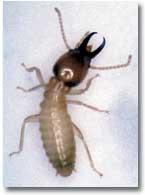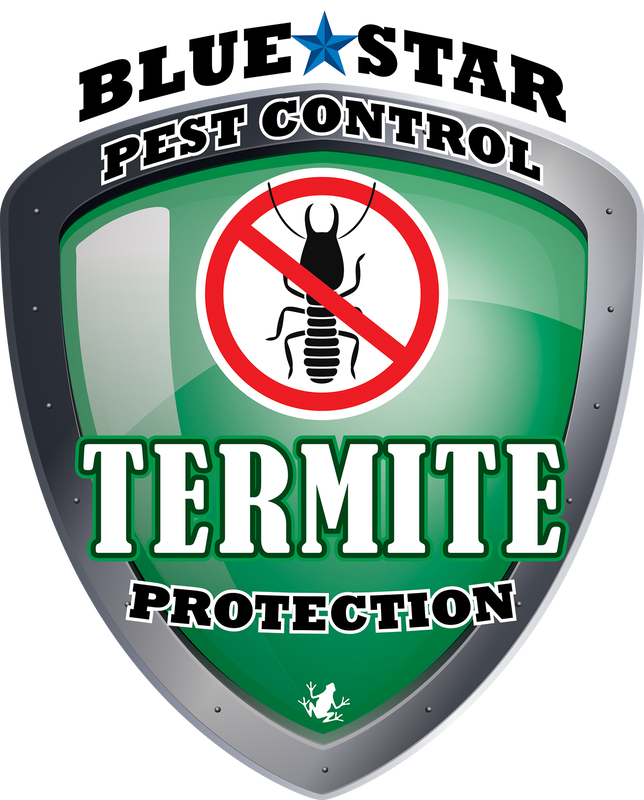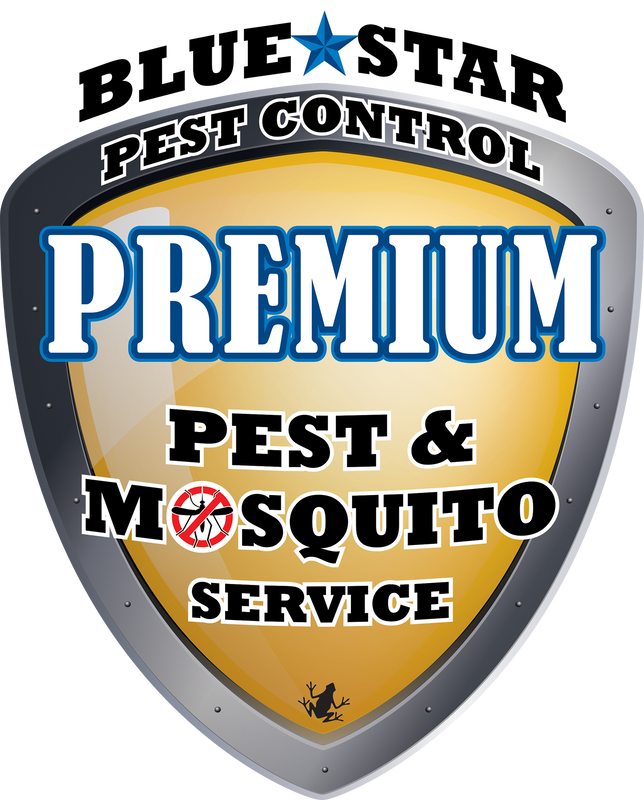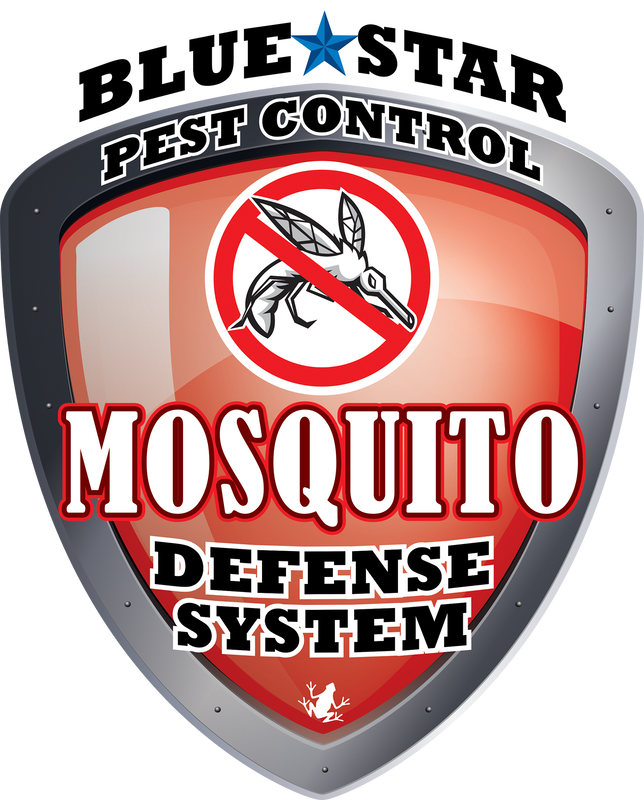Formosan Termite
|
The Formosan subterranean termite is one of the most destructive termite species in the world today. In the United States it causes tremendous property damage resulting in enormous treatment and repair costs. It is sometimes referred to as the "Super Termite." Generally, the first indirect sign of infestation is fecal pellets or the presence of alates on windowsills or near lights. Alates are the winged form of a formosan termite, also commonly called a swarmer. If they are found inside a home with closed windows and doors, this can be an indication of infestation within the structure. Another indication is the presence of discarded wings near emergence sites, on windowsills, or caught up in cobwebs. However, the presence of alates outdoors is a natural phenomenon and is not a direct sign that your home is infested with termites.
Identification Soldiers have orange-brown, oval-shaped heads with a small pore, called the fontanelle, on the front of the head. The soldiers produce droplets of a white, glue-like fluid from this pore when they are attacked. This fluid gums up and disables attackers. They also have black, sickle-shaped jaws - mandibles - that can be crossed to form an X. The bodies are yellowish-white and are about 1/5 to 1/4 inches long. These soldiers are very aggressive and will attack fingers or tools if provoked, although their bite and fluid is harmless to humans. The winged form, also called an alate or swarmer is yellowish-brown with a golden brown head, a pair of black eyes and 2 pairs of wings of equal length. They are about 1/2 to 3/5 inch long from head to wingtip. The wings are clear with two heavily thickened veins on the leading edge and are covered with small hairs that are clearly visible under magnification. Habitat This termite has been transported worldwide from its native range in southern China to Formosa and Japan. Within the last 100 years it has become established in South Africa, Hawaii and the continental United States. It is believed that the Formosan subterranean termite was transported to port cities on the Gulf of Mexico and southeast Atlantic coast by ships returning from the Pacific Theater at the end of WWII. The Formosan subterranean termite has the potential to spread throughout the whole state. Young colonies living in potted plants, landscape timbers, or infested trees can easily be transported. Alates, the winged reproductives, can also swarm from infested boats into new locations as the boats travel from place to place. Subterranean termite species, such as the Formosan termite, generally live underground. They tunnel through the soil in search of food. Unlike native subterranean termites, Formosan termites build large nests. These large nests are made of carton, a hard material the workers make from soil, chewed wood or plant matter, and their own saliva and feces. Carton nests are quite impressive - a large, rock-like mass constructed by hundreds of thousands or millions of termites. The termites crawling above ground build mud shelter tubes because they do not like being exposed in the open to light and air. The tubes keep the termites from drying out and shield them from predators, such as ants, and natural enemies. Shelter tubes are often found on walls coming up from the ground or floor, however, they may also be found sticking out or dropping down to the ground in crawl spaces, under porches or stairways, etc. Tubes and carton may be in places where they are difficult to see such as stucco or plaster cracks, tree holes, tree crotches, etc. You can break the tubes open to check for termites. Although nesting mostly below ground, some Formosan termite colonies will build above-ground nests that are not connected to the soil. Nests can be made in structures where the temperature does not get too hot or cold and there is plenty of moisture sources such as: plumbing, water heater, roof leaks, condensation from air conditioning units, poor drainage from gutters and flat roofs, seepage and rainfall on boats and ships, porches, balconies, rooftops, etc. with plants or landscaping that are frequently watered. Diet Like many other termites, the formosan termite feeds on wood and other materials that contain cellulose, the main structural component of plants. A colony can cause serious damage to a structure within 3 months. Bacteria and other single-celled organisms live in the termite digestive system and digest cellulose providing nutrition and energy for these termites. Although they feed mostly on wood, they will eat other cellulose-containing materials such as cardboard and paper. However, they have been known to chew through foam insulation boards, thin lead and copper sheeting, plaster, asphalt, and some plastics. Contrary to popular myth, these termites DO NOT eat concrete nor can the soldier's defensive fluid dissolve holes in concrete. These rumors came about because termites are always digging through the soil. Because of this continuous activity, they are likely to find cracks and crevices in concrete or mortar and gain entry to a structure. Reproduction Formosan termite swarms usually occur from April through July on calm, warm, and humid evenings. Swarms are quite large with up to tens of thousands of alates. The swarmers are attracted to lights and are often found around windows, light fixtures, windowsills, and spider webs in lighted areas. After swarming and landing on the ground, the alates break off their wings and search for a mate. Once a mate is found, the male and female search for a crevice in damp ground or wood, hollow out a small chamber, and crawl inside. The pair, now known as the king and queen, mate and within a few days the queen starts laying eggs. The young, known as larvae, hatch from the eggs and are fed by the king and queen. The territory of a single colony can be up to 300 feet and can be located in a wide variety of structures. A mature colony, which is much larger than those of native subterranean termites, contains groups called castes. Each group has a special duty: the king and queen are the primary reproductives; if either dies or the colony becomes large, secondary reproductives may form and begin reproduction. Soldiers defend the colony against predators and other natural enemies. Workers take care of and feed the larvae, reproductives and soldiers, tend the eggs, build and maintain the nest, and search for food. Although you may choose to make the inspection yourself, we recommend you have a professional pest control company that has the experience of detecting termite infestations you may otherwise overlook. |
|






